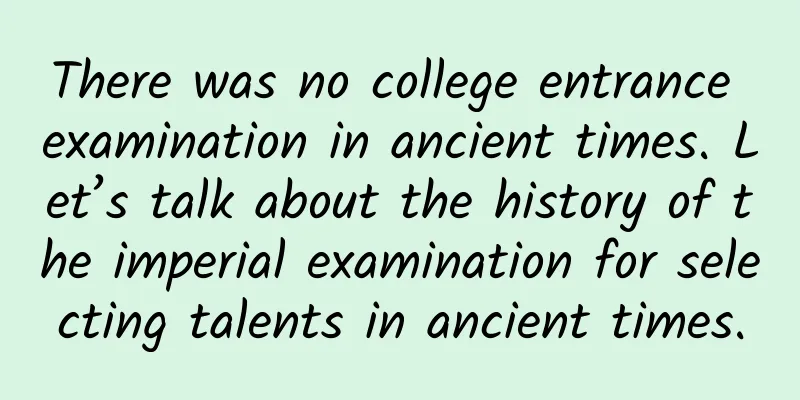What are those random things you see during a migraine?

|
Leviathan Press: When I was a kid, I would always “see” a lot of dark spots after closing my eyes when I was ready to go to sleep. Moreover, as long as you focus your attention there (blindness?), they will seem to move quickly and randomly. I once thought it was the residual image (persistence of vision) produced on the retina after I just closed my eyes, but later I felt that it was not the case. Especially when I found that you can even chase those dark spots for a long time, I felt very puzzled. The above is off-topic. However, regarding migraine pain causing visual distortion, this is the first time I have heard of it. If you have similar experiences, please leave a message in the comment area to discuss. “ Migraine affects a significant proportion of the population, is present in all civilizations, and has been recognized since the beginning of recorded history ,” neurologist Oliver Sacks wrote in a 1970 study in response to the prevailing medical view of the time that “little was known about migraine and even less about its treatment.”[1] Although migraines share some symptoms with common headaches, their frequent visual distortions distinguish them from headaches caused by tension, stress or dehydration. But while the phenomenon is common, its medical observation is relatively new. As described by Katherine Foxhall in Migraine: A History[2], John Fothergill’s description of a headache he suffered in the winter of 1778 is considered the first English-language record of the ocular component of migraine. He saw "a strange light, objects changing their angles of illumination, surrounded by luminous corners, like the corners of a castle fort. Dizziness, headaches, and nausea followed." Fothergill used the architectural language of a fort to describe in detail what became known as the "scintillating scotoma": a jagged illusion in the shape of a "C", similar to the corners of a bastion. Mathematician Jean Errard's diagram of the bastion, 1660. © Fortification Réduicte Art and Démonstrée In 1870, physician Hubert Airy, dissatisfied with suffering alone, decided to depict and share his own migraine experiences. Hubert Airy (1838-1903). © National Portrait Gallery He corresponded frequently with the astronomer John Herschel, who, over breakfast, shared with Fothergill a feeling of being troubled by a "rectangular pattern" that closely resembled the general appearance of the bastion fortress, " with protruding and recessed angles, bastions and faint lines of colour between openings ". Herschel, who coined the term "photography", was forced to turn this power of observation inward due to his poor nervous condition. A diagram depicting the development of Hubert Airy's scintillating scotomata, from his 1870 article "On a distinct form of Transient Hemiopsia," published in the Philosophical Transactions of the Royal Society. © wikimedia While Herschel was convinced that his hallucinations were a precursor to blindness, Airy believed that the patterns he saw during his migraines — dark spots that his father, Astronomer Royal George Airy, also frequently saw, described as “ Norman arches ” — revealed important information about the brain. In 1870, Hubert Airy presented a paper to the Royal Society of Cambridge, which was subsequently published as “On a Unique Form of Temporary Hemi-blindness.”[3] In the midst of a scientific discussion, Airy inserted a diary entry from 1854, detailing his first migraine attack while a student. Here we find an unusual description: At its peak, the illusion looked like a town with fortifications on all four sides, which were richly decorated. The entire interior of the city walls seemed to be a strange liquid that was boiling and tumbling in a strange way, like some thick liquid full of life. Attached to the article are several images provided by Airy showing the development of scintillating scotomata. "So why did Airy think his personal experience was worth presenting to the Royal Society?" asked Catherine Foxhall. The first part of Hubert Airy's scintillation dark spot image. © archive.org The answer to that question also reveals how technological advances have provided a new set of metaphors for medical research. "For, he concluded, the scintillating scotomas were more than just a disease. They could be seen as 'a true picture of a pathological process going on in the brain.'" Headaches are one of the few ailments that have persisted throughout human history. Mervyn J. Eadie recounts a description recorded by an ancient Babylonian cuneiformist and translated by Reginald Campbell Thompson.[4] This may be the earliest extant description of a headache. In this description, perhaps we can find something similar to the “flash” of migraine: “ The headache wanders in the desert, blowing like the wind / Flashing like lightning, released from above and below. ” Thompson, in his The Devils and Evil Spirits of Babylonia (1903), also reveals a potential relief that was discovered long before the advent of ibuprofen and paracetamol: Let a skilled woman, Stretch a strand of virgin hair on the right side of the patient's head. and tied it around the patient's head. This can take the headache out of the body. Like a wisp of smoke rising up from a quiet home. In medieval Europe, there was a similar connection between headaches and mysticism, and perhaps the aura of a migraine could be understood as a divine revelation: the shape of the dark spot was seen as the image of an angel. Illustration from the manuscript of Scivias, showing Hildegard von Bingen receiving a vision and dictating it to her scribe. © wikimedia The Heavenly City, one of Hildegard von Bingen's castle-like hallucinations. © wikimedia Charles Singer (1876-1960), the first president of the British Society for the History of Science, examined the medieval manuscript Scivias (completed in 1151) – the result of the mystic Hildegard of Bingen’s hallucinations presented in vivid, layered patterns – and he “immediately recognised that the images … paralleled descriptions of what patients had seen during attacks of migraine”. A diagram from PW Latham's On Nervous or Sick-Headache (1873), showing "visual disturbances". © wikimedia Flickering scotoma, from Joseph Babinski's De la migraine ophthalmique hystérique (1891). © wikimedia Extract from Diseases of the Nervous System by Smith Ely Jelliffe and William A. White (1919), titled "Development of spots in migraine headaches while reading." © wikimedia A "spread spectrum" seen half on a dark background and half on a bright window. From neurologist WR Gowers's Subjective Sensations of Sight and Sound (1904). © wikimedia An illustration from WR Gowers's Subjective Perceptions of Vision and Hearing (1904) showing how scotomas interfere with the visual field while reading. © wikimedia A Mr Baker describes the "progressive spectrum" from WR Gowers's The Subjective Sensations of Vision and Hearing (1904). © wikimedia Mr. Baker's description of the "peripheral spectrum", from WR Gowers's The Subjective Sensations of Vision and Hearing (1904). © wikimedia Extract from W.R. Gowers's Subjective Perceptions of Sight and Hearing (1904), depicting Mr. Baker with a migraine "arched spectrum (with rainbow colors)" above his head. © wikimedia © Better Health Text/domainreview Translated by tim Proofreading/tamiya2 Original text/publicdomainreview.org/collection/visualizing-migraines/ This article is based on the Creative Commons License (BY-NC) and is published by tim on Leviathan The article only reflects the author's views and does not necessarily represent the position of Leviathan |
Recommend
How dangerous is Ailao Mountain? How to protect life safety when working in the field?
Expert of this article: Yan Lina, Associate Profe...
Important reminder! Clear immediately when you see it!
"This grass is called ragweed. It is an inva...
Is it expensive to produce the Hegang Book Mini Program? List of production costs of Hegang Books Mini Program
There is no doubt that the topic of mini programs...
Do you know these 4 types of viral marketing that can spontaneously generate secondary dissemination?
The new shopping maxim for today’s consumers is: ...
A 5-yuan tea drink is actually a magical skin care product that can remove acne and whiten your skin? The truth...
Recently, a drink you may have drunk has become a...
Explosion! Collision! This is the early solar system
Iron meteorites suggest millions of years of turm...
0 cost, daily increase of 1000+ followers, the must-know traffic-driving method for new media
This article shares with you an alternative but e...
New media content operation planning skills!
In this age where content is king, whoever can pr...
The rise of Asian power at CES has Americans worried
[[125612]] Although Las Vegas is a tourist city, ...
Kuaishou information flow advertising marketing method!
A detailed introduction to Kuaishou's informa...
Should I apply a facial mask every day if my skin is dry in winter? Get the right way to take care of your skin in winter
gossip Many female stars have very soft and moist...
Kuaishou short video advertising platform gameplay + case introduction!
Kuaishou is a well-known short video application ...
What nutrients does umbilical cord blood contain?
When it comes to the source of nutrition for babi...
Wireless charging, say goodbye to the "wired" life!
Wireless charging form There are three types of w...
Zbrush course advanced animation full process case teaching model mapping chapter [HD quality with material]
Zbrush course advanced animation full process case...









